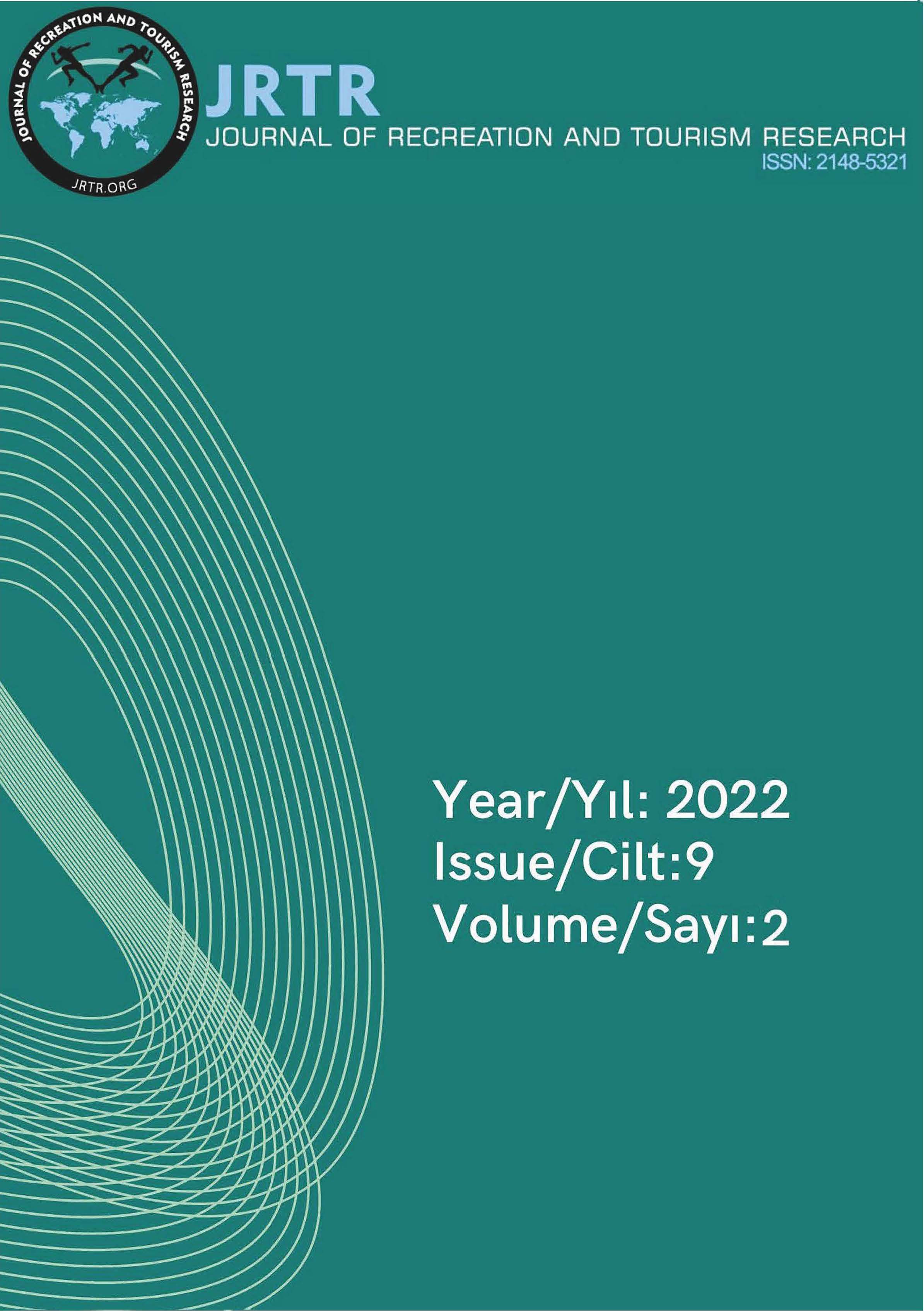Evaluation of the Airplane Restaurant in the Scope of Industrial Heritage Tourism: Case of Muğla Uçak Park Restaurant
DOI:
https://doi.org/10.5281/zenodo.6774461Keywords:
Industrial Heritage Tourism, Airplane, Restaurant, MuğlaAbstract
The tourism sector and the products/services offered are directly and indirectly affected by the development of industrial sectors. The new means of transportation, which developed with the industrial revolution, created the turning points that allowed the rapid increase in tourism activity in the past. However, they have completed their transportation missions due to lagging behind modern technology, have become a part of cultural heritage and have become a tourist attraction, recently. Furthermore, increasing interest in cultural tourism and industrial heritage tourism, which is a niche area in this context, has brought along a more intense use of industrial heritage elements in the tourism sector. The aim of this study is to conduct a case study in order to obtain in-depth information about the newly developing industrial heritage tourism in Turkey. Uçak (Airplane) Park Restaurant operating in Muğla was determined as a sample to be examined within the scope of the research. Data were collected with interview and observation techniques from qualitative research methods. In line with the findings, the tangible and intangible cultural characteristics of the aircraft, which was investigated as an industrial heritage element, were examined thoroughly. Besides, the fact that there are examples of similar enterprises in various countries and destinations has been evaluated as an indicator of the potential of the use of the specified aircraft within the scope of industrial heritage tourism to create a tourism attraction. The research was concluded by indicating the importance of respecting the conservation and sustainability while carrying out the industrial heritage tourism activities, in order to increase its contribution to both the preservation of the heritage and the creation of unique experience opportunities for visitors.
Downloads
References
Buchanan, A. (1985). The definition of industrial archeoogy”, L’étude et la mise en valeur du patrimoine industriel. 4. Conférence Internationale, Lyon: Grenoble, 104-108.
Can, M. (2009). Kültürel Miras ve Müzecilik. Kültür ve Turizm Bakanlığ Çalışma Raporu, 22.
Doğan, H., ve Aktan, V. (2017). Tarihten sanata ve turizme bir kültür hazinesi: Gaffur'un pijaması ve sümerbank basma fabrikası desenleri. www.academia.edu, 1-10.
Edwards, J. A., ve Llurdes, J. C. (1996). Mines and quarries: Industrial heritage tourism. Annals of Tourism Research, 23, 341-363.
Güneş, G. (2014). Maden ve taş ocakları örneğinde endüstri mirasının korunması ve yeniden kullanımı. Ulusal Mermer ve Taş Ocakları Onarım Teknikleri Sempozyumu Bildiriler Kitabı. Isparta: Süleyman Demirel Üniversitesi, 324-334.
Kaya, M., ve Yılmaz, C. (2018). Endüstriyel miras turizmi için bir örnek: Ayancık- zingal orman işletmesi (Sinop). Erciyes Üniversitesi Sosyal Bilimler Enstitüsü Dergisi XLIV, 121-162.
Kıraç, A. B. (2013, 02). Endüstri mirasının korunması ve yeniden değerlendirilmesi. Mimaran, 7-13.
Lane, B., Weston, R., Davies, N. J., Kastenholz, E., Majewsjki, J., ve Lima, J. (2013). Industrial heritage and agri / rural tourism in europe. Brussels: European Parliament, 1-141.
Nergiz, S. (2015). Bingöl sanayi potansiyeli ve yatırımların belirlenmesi. Çağ Üniversitesi Sosyal Bilimler Enstitüsü İşletme Yönetimi Ana Bilim Dalı, 1-65.
Nuryanti, W. (1996). Heritage and postmodern tourism. . Annals of Tourism Research, 23 (2), 250-260.
Oral, E. Ö., ve Ahunbay, Z. (2005). Bursa’nın ipekçilikle ilgili endüstri mirasının korunması. İTÜ Dergisi, 1-10.
Saner, M. (2012). Endüstri mirası: Kavramlar, kurumlar ve türkiye’deki yaklaşımlar. Planlama Dergisi, 53-66.
Santa, E. D., ve Tiatco, S. A. (2019). Tourism, heritage and cultural performance: Devoloping a modality of heritage tourism. Tourism Management Perspectives, 31, 301-309.
Stratton, M. (2000). Understanding the potential: Location, configuration and conservation options, Industrial buildings, conservtion and regeneration. E&FN Spon.
TICCIH (2011). The International Committee for he Conservaiton of Industrial Heritage - Endüstriyel Mirasın Korunması Uluslararası Komitesi. www.ticcih.org: http://ticcih.org/about/about-ticcih/dublin-principles/ (2021, 08 01 Erişildi).
Torlak, S. E. (2013). Endüstri mirasının ekonomiye kazandırılması: Toronto distilery district dönüşüm örneği. International Conference on Eurasian Economies İstanbul: Beykent University, 705-710.
Türnüklü, A. (2000). Eğitim bilim araştırmalarında etkin olarak kullanılabilecek nitel bir araştırma tekniği: Görüşme. Kuram ve Uygulamada Eğitim Yönetimi, 6 (24), 543-559.
Uysal, M., Ersöz, Z. R., ve Fazla, İ. A. (2019). Konya tren garı yerleşkesi tarihi lokomotif deposu için bir yeniden kullanım önerisi. Konya Sanat Dergisi, Sayı 2, 67-86.
Vargas-Sanchez, A. (Ed.) (2015). The Palgrave Handbook of contemporary heritage research. Industrial Heritage and Tourism: A Review of the Literature. In: Waterton E. Palgrave Macmillan.
Yang, X. S. (2016). Industrial heritage tourism development and city image reconstruction in chinese traditional industrial cities: A web content analysis. Journal of Heritage Tourism, 12:3, 267-280.
Yılmaz, H. (2014). Eskişehir’in biricik destinasyon önerisi: Endüstriyel miras . Dokuz Eylül Üniversitesi İktisadi ve İdari Bilimler Fakültesi Dergisi, Cilt:29, Sayı:2, 205-225.
İnternet Kaynakçası
https://tr.wikipedia.org/wiki/End%C3%BCstri_4.0 (Erişim tarihi: 27.12.2020).
https://www.erih.net/i-want-to-go-there/site/zollverein-mine-and-coking-plant-world-heritage-site (Erişim tarihi: 20.11.2020).
https://sozluk.gov.tr/ (Erişim tarihi: 07.08.2021).
http://www.konyamimod.org.tr/public/upload/files/mimaran-no09.pdf#page=7 (Erişim tarihi: 01.08.2021).
https://www.hurriyet.com.tr/lezizz/galeri-bu-ucaklardan-dunyada-sadece-birkac-tane-varustelik-turkiyede-41452352/22 (Erişim tarihi: 01.08.2021).
https://www.havayolu101.com/2012/04/10/airbus-a300 (Erişim tarihi: 07.08.2021).
Downloads
Published
How to Cite
Issue
Section
License
Copyright (c) 2022 Journal of Recreation and Tourism Research

This work is licensed under a Creative Commons Attribution-NonCommercial 4.0 International License.






